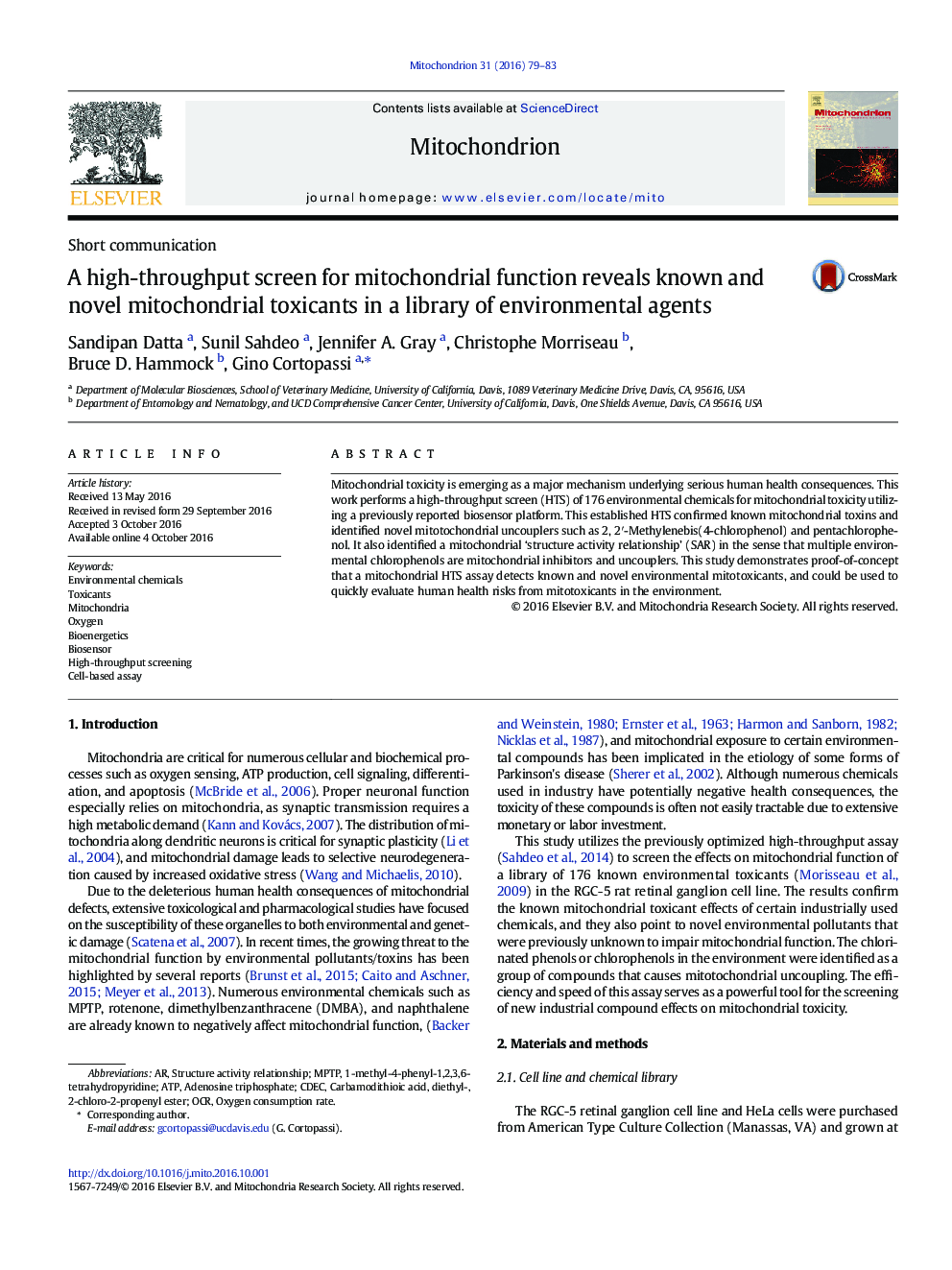| Article ID | Journal | Published Year | Pages | File Type |
|---|---|---|---|---|
| 5519729 | Mitochondrion | 2016 | 5 Pages |
â¢A rapid high-throughput mitochondrial activity screen identifies mitoactives in an environmental toxicant library.â¢Environmental pollutants 2,4D; Isophenphos and 2-Natpthoxyacetic acid cause mitochondrial dysfunction.â¢Chlorinated phenols in general impair mitochondrial function.â¢Environmental compounds 2,2´-Methylenebis(4-chlorophenol) and pentachlorophenol are potent mitochondrial uncouplers.â¢2,2´-Methylenebis(4-chlorophenol) and pentachlorophenol are banned in many countries in the world except the USA.
Mitochondrial toxicity is emerging as a major mechanism underlying serious human health consequences. This work performs a high-throughput screen (HTS) of 176 environmental chemicals for mitochondrial toxicity utilizing a previously reported biosensor platform. This established HTS confirmed known mitochondrial toxins and identified novel mitotochondrial uncouplers such as 2, 2â²-Methylenebis(4-chlorophenol) and pentachlorophenol. It also identified a mitochondrial 'structure activity relationship' (SAR) in the sense that multiple environmental chlorophenols are mitochondrial inhibitors and uncouplers. This study demonstrates proof-of-concept that a mitochondrial HTS assay detects known and novel environmental mitotoxicants, and could be used to quickly evaluate human health risks from mitotoxicants in the environment.
